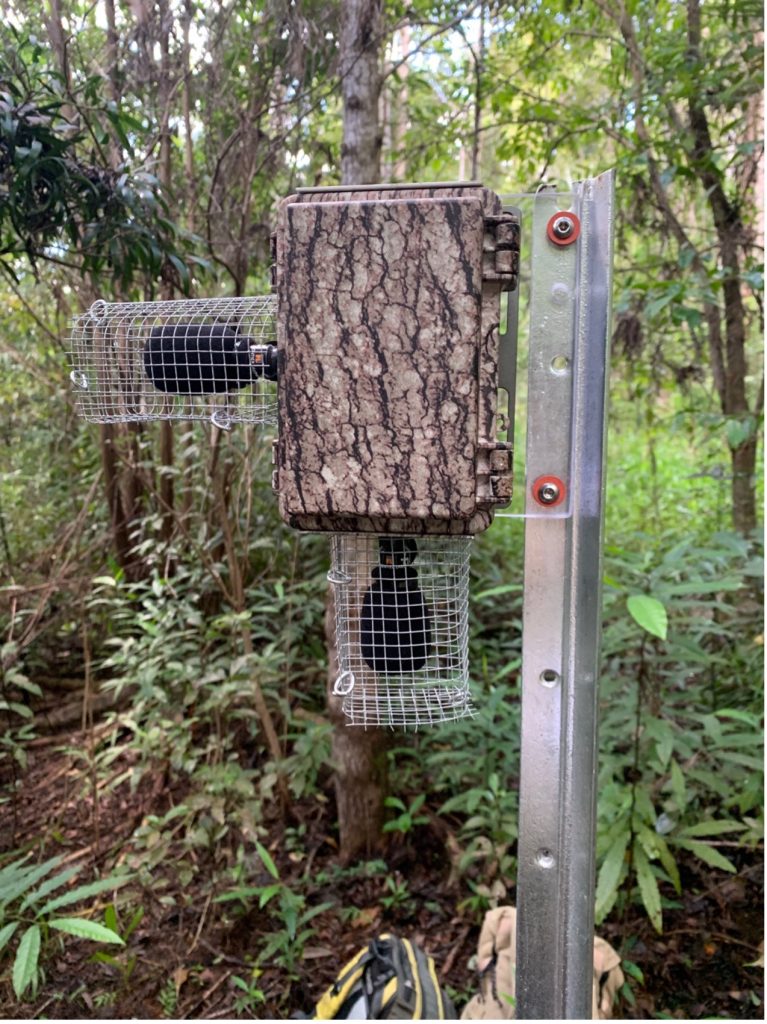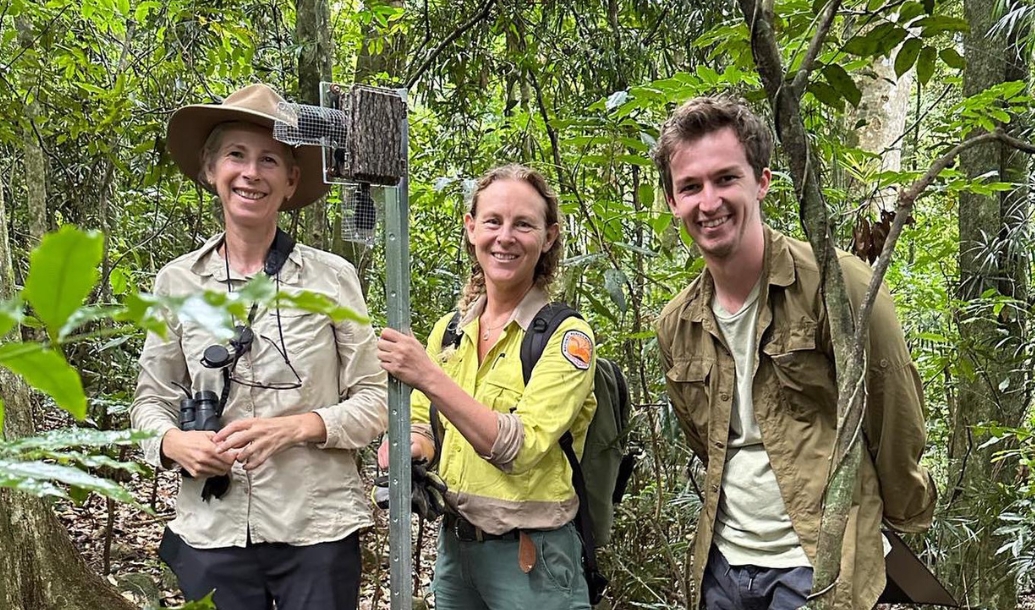Our exciting new project to systematically monitor Big Scrub bird species is officially underway with the deployment of bioacoustic recording devices and cutting-edge bird call analysis software at sites across the Big Scrub.
With funding support from Rekindle Foundation, Big Scrub Rainforest Conservancy is undertaking the project to help us understand how bird species assemblages are influenced by the management and disturbance histories of rainforest habitats. Currently some species, such as the Albert’s Lyrebird and Paradise Riflebird, are believed to be extinct in the smaller, isolated remnants, requiring larger areas of mature habitat, like Big Scrub Flora Reserve and Minyon Falls, in order to persist.

But as the availability of mature habitat for rainforest dwelling species increases, and as more linkage and expansion of remnants occurs, the potential for bird species to recolonise sites is growing. It is hoped that the results will identify changes in bird species using the Big Scrub remnants since the last known systematic bird study almost four decades ago by Glenn Holmes, as well as identify bird species using the restoration sites that have since been planted with Big Scrub rainforest species.
The project, led by leading wildlife ecologist, David Milledge, and ecologist, Georgia Beyer, is monitoring bird vocalisations at 12 sites of varying size, maturity, and disturbance and management histories.

Along with studying birds using the remnant rainforest pockets across the Big Scrub footprint, we’re hoping to also see encouraging signs of bird species inhabiting older rainforest patches that were planted 25-35 years ago, as well as younger rainforest patches planted 5-15 years ago.
Bioacoustic sound recording devices have been deployed at the sites to record and analyse bird calls. Sound monitoring occurs at selected time periods during the day and night, before being analysed.
The study will collect data seasonally across a three-year period to identify changes in habitat use over time, particularly important in our changing climate. Observational surveys of birds will also be carried out periodically at each site to help bolster the data and capture bird species that are not detected by acoustic recording, such as Topknot Pigeons.
Bird assemblages are expected to vary with season and also with the phenology of food trees, vines and other plants.⠀⠀⠀
 ⠀⠀⠀⠀⠀⠀
⠀⠀⠀⠀⠀⠀
One of the newly planted rainforest sites included in the study is Brookfarm, which was a tiny remnant that was expanded with newly planted rainforest over 30 years ago.
In a pilot study done in eight Big Scrub sites, a total of 71 bird species were recorded across all sites. Findings from this study helped us finetune the approach, and gave an encouraging start to the much longer main study period.
Initially the project will run for three years to establish a baseline of bird species occurrence against which to gauge the effects of vegetation enhancement and succession at the sites, but also to assess the impacts of climate change and associated perturbations in the longer term.
It’s a great new project that we hope will demonstrate the habitat value of re-established rainforest and encourage other landholders to undertake rainforest restoration. We’ll keep you posted as interesting findings unfold about how the many beautiful and threatened bird species of the Big Scrub are making a comeback with the help of our ongoing restoration efforts.


